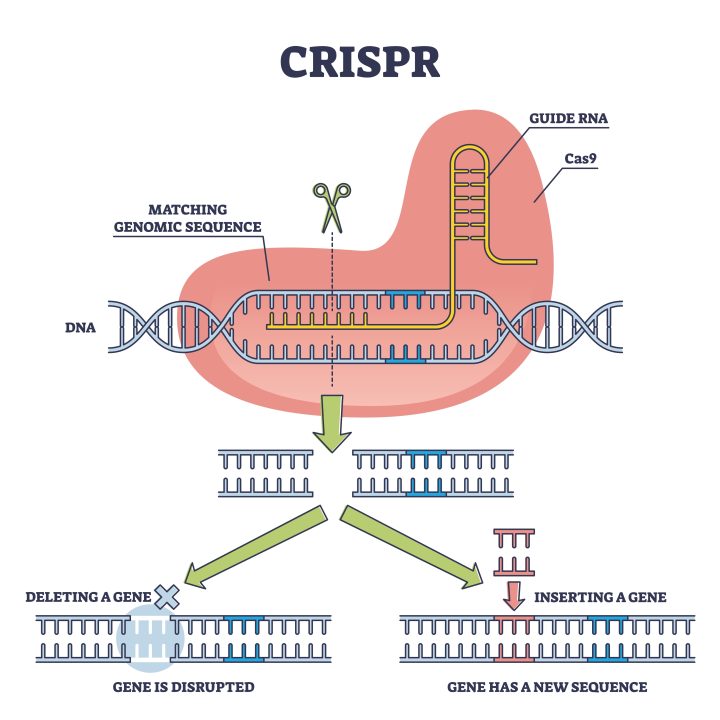Image from Lukas Kummer
iGEM Project 2023 | Part 7
The acronym CRISPR stands for “Clustered Regularly Interspaced Short Palindromic Repeats.” It may sound intimidating, but let us calmly explain what it is. It’s simpler than you might think. Let’s start from the end: there are repetitions, repetitions of what? DNA. Good, that’s settled. However, these repeated sequences would be useless on their own. They are “regularly” interspersed with “short” sequences that we call spacers. These “spacers” are fragments of viral genome we talked about in the previous article, and they represent the bacterial immune memory.
The final component of what is called the CRISPR locus (the genomic region containing this system) is the Cas genes (CRISPR-associated genes), which contain the information for the Cas protein we mentioned before.
Now let’s see how this system works together: the CRISPR locus is transcribed to produce a long RNA molecule, which is subsequently cut to separate the various spacers. Yes, it’s a bit complex, but let’s go through the steps again: first, a list of numerous instructions is generated to go to different places (somewhat useless in this context), then the individual destinations are separated at the spacers. At this point, we need to give these instructions to those who need them: the Cas protein.

Image from LabAssociates
The Cas protein loads what is called a guide RNA and uses it to direct its activity. When it encounters the DNA molecule that matches its guide, it positions itself on the strand, opens it, and cuts it. This system is highly effective in eliminating a dangerous virus because by cutting the DNA, it prevents the expression of information necessary for reproduction. Thus, it serves as a bacterial immune system. However, when the first researchers discovered this mechanism, it opened up a world of ideas and potential applications, which we will discuss next time.